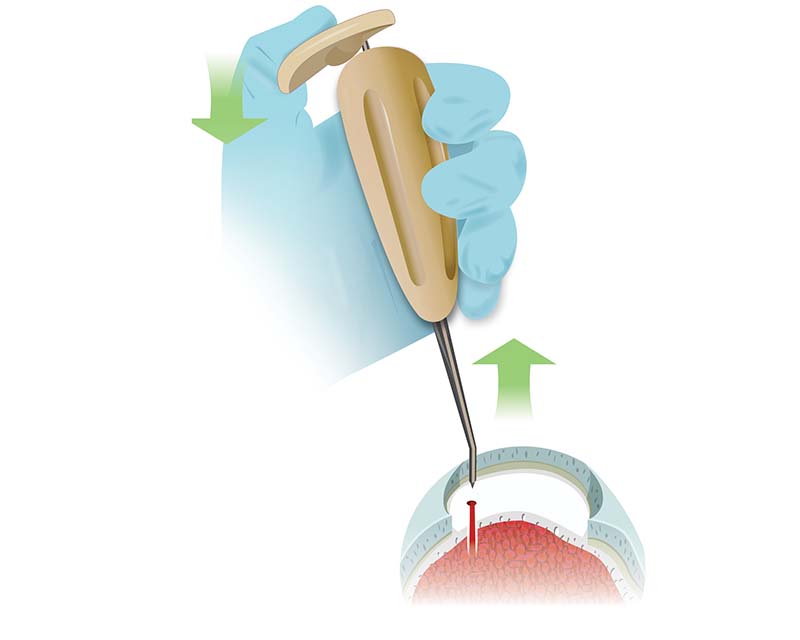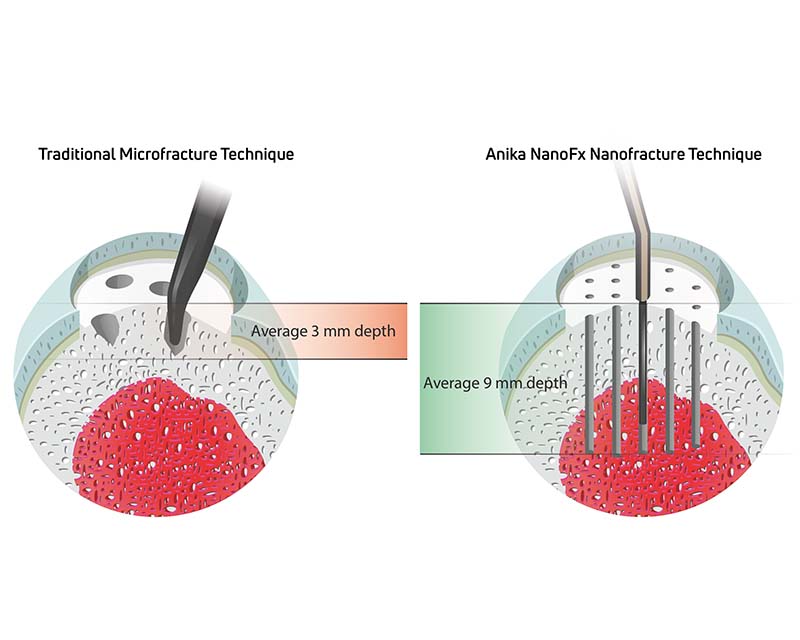A Smaller, Deeper, Better Alternative to Traditional Microfracture Procedures
NanoFx Microfracture System
The NanoFx® (Nanofracture®) system consists of a reusable hand instrument and a single-use disposable PleuriStik™ k-wire used to perform a microfracture procedure for the treatment of small, localized articular cartilage defect sites. The 1mm PleuriStik disrupts less surface area than a standard microfracture technique and was purposefully designed to reduce damage to the subchondral plate. It penetrates down to a standardized 9mm depth to reach the targeted marrow cells, three times deeper than comparable microfracture techniques.
When tested against an awl or generic k-wire, NanoFx resulted in thin, fragmented cancellous bone channels without rotational heat generation. It also demonstrated deep cancellous bone perforation with a higher number of open trabecular channels.
The NanoFx handle is available with a 15° angle and as an A-Curve, specifically designed for hard to access ankle lesions.
Key Features & Benefits:
- Disposable, always sharp 1mm PleuriStik with reusable targeting handle is an easy-to-use cell delivery system that disrupts less surface area than a standard microfracture technique, reducing damage to the subchondral plate
- Standardized 9mm perforation depth provides improved access to the targeted marrow cells
- No secondary blood or marrow aspiration step required to access Mysenchymal cells
- No centrifuge or additional equipment necessary to prepare plasma or aspirate
- Compared to traditional microfracture and k-wire stimulation, NanoFx showed superior bone marrow access with multiple trabecular access channels extending 9mm into subchondral bone1
Anika products may not be available in all geographies. Product availability is subject to the regulatory clearances in individual markets. Please reach out to your local representative or Contact Us if you have questions about specific market approvals.
For complete product information, including indications, contraindications, warnings, and precautions, please refer to the Instructions for Use found here.
- Arthrosurface data on file




